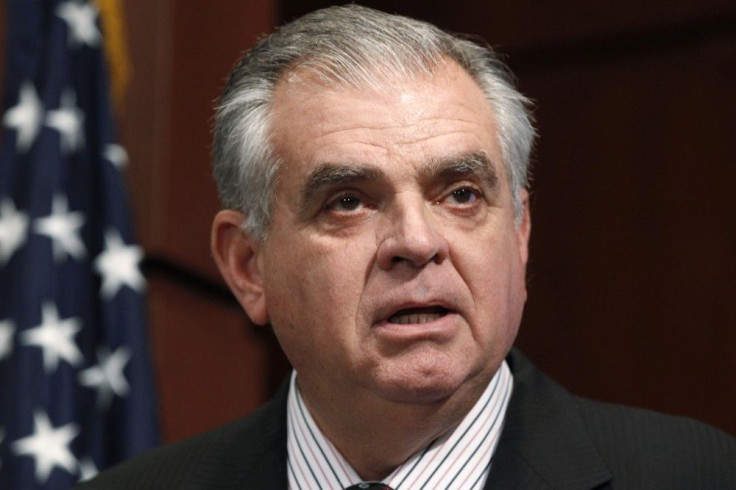Life-Saving Rearview Camera Regulations Delayed Again by U.S.

For a split second, Sue Auriemma thought the screams came from the neighborhood kids. For a split second, she continued to back up her car in her driveway, unaware that her 3-year-old daughter, Kate, was behind the right rear tire.
She stopped. She remembered the story of Cameron Gulbransen. She realized that she had just run over her daughter.
Oh my God, this is what happened to him, Auriemma recalled thinking. I just ran over someone's child.
It was her own child. Kate Auriemma was covered in blood and taken to the emergency room. Thankfully, she escaped the 2005 accident without any broken bones or head injuries.
She survived. Other children and parents that aren't as lucky -- two children are killed and 50 seriously injured each week from being accidentally backed over.
Which is why Auriemma, of Manhasset, N.Y., and KidsAndCars.org, where she serves as vice president, have pushed for regulations requiring automakers to install rearview cameras in passenger vehicles under 10,000 pounds by 2014. But the National Highway Traffic Safety Administration has again delayed that regulation, failing to meet Wednesday's deadline to present a bill to Congress.
The NHTSA had been expected to deliver a finalized version of the rule, which has been in the works since 2008, to Congress by Wednesday's deadline. But Transportation Secretary Ray LaHood wrote in a letter to Sen. Kay Bailey Hutchison, R-Texas, ranking Republican member of the Senate Committee on Commerce, Science and Transportation, that the department would need more time to study and analyze data before finalizing a rule.
The NHTSA proposed the ruling back in December 2010. This is the second time LaHood has extended the deadline for a final rule. This time, the deadline was pushed to the end of 2012, after the presidential election.
I believe it is important to allot additional time to ensure that the final rule is appropriate and the underlying analysis is robust, LaHood wrote in the letter.
The new regulations were expected to cost the auto industry up to $200 per vehicle, or about $2.7 billion per year in total. But automakers had generally favored the measure.
Wade Newton, a spokesman for the Alliance of Automobile Manufacturers, said the group supported the measure, but concern stemmed from technical issues and the cost that would have been passed onto consumers.
We in the auto industry have that understanding that consumers really want the choice of what options they're willing to pay for, Newtown said. The worst-case scenario is when you develop technology in any situation that moves the product outside the range of the consumer, and they don't buy the technology, and it sits there on a lot, waiting to get sold. That doesn't serve anyone well.
The NHTSA presented a proposal to mandate rear-view cameras in 2010 after Congress passed the Cameron Gulbransen Kids Transportation Safety Act of 2007, requiring the agency to look into the issue. The agency estimated that the measure, in its original form, could save 228 lives and prevent nearly 18,000 injuries each year. It proposed that 10 percent of new vehicles comply by September, 40 percent by September 2013 and all vehicles by September 2014.
According to the NHTSA, young children and the elderly make up 77 percent of pedestrian fatalities in automobile accidents. Government regulators have been slow to address one of the biggest factors in those high numbers -- the spacious blind zones that prevent the driver from seeing clearly.
There was no rearview visibility standard, Auriemma said. You could have a mirror, but you could literally take black paint and paint over your back window. There was nothing that specified what you had to be able to see.
According to Total Car Score, 64.5 percent of 2010 through 2013 models come with a rearview camera available. In 330 2012 models, that percentage jumps to 67.9, compared with just 59.1 percent of 2010 models.
Nissan Motor Co. spokesman Steve Yaegar said in an e-mail that the company had not seen a copy of the final rule, but that Nissan has developed advanced rear-view monitor and sensor technologies into most of our model lines already. According to Total Car Score, Nissan has rearview cameras available in 15 of 21 of its 2012 model vehicles.
We have not seen a copy of the final rule, he said, so it is too early for comment on the details.
KidsAndCars.org began pressing for the regulations after the death of Cameron Gulbransen, a 2-year-old Long Island boy who was killed in October 2002 when his father, Greg, backed up his car at night without realizing his son had followed him outside. Backovers were the leading cause of fatalities involving children under 15 from 2006 through 2010, according to KidsAndCars.
On its site, the group has posted three videos that serve as public service announcements for the cause. In one video, the group put 62 young children behind a vehicle and displayed how they were not visible to the driver.
LaHood said in a statement that going forward, the Department of Transportation will continue to progress toward a final rule.
Safety is the number one priority at the Department of Transportation-and we give especially high priority to the safety of children, LaHood said. ... The Department remains committed to improving rearview visibility for the nation's fleet and we expect to complete our work and issue a final rule by December 31, 2012.
© Copyright IBTimes 2024. All rights reserved.



















